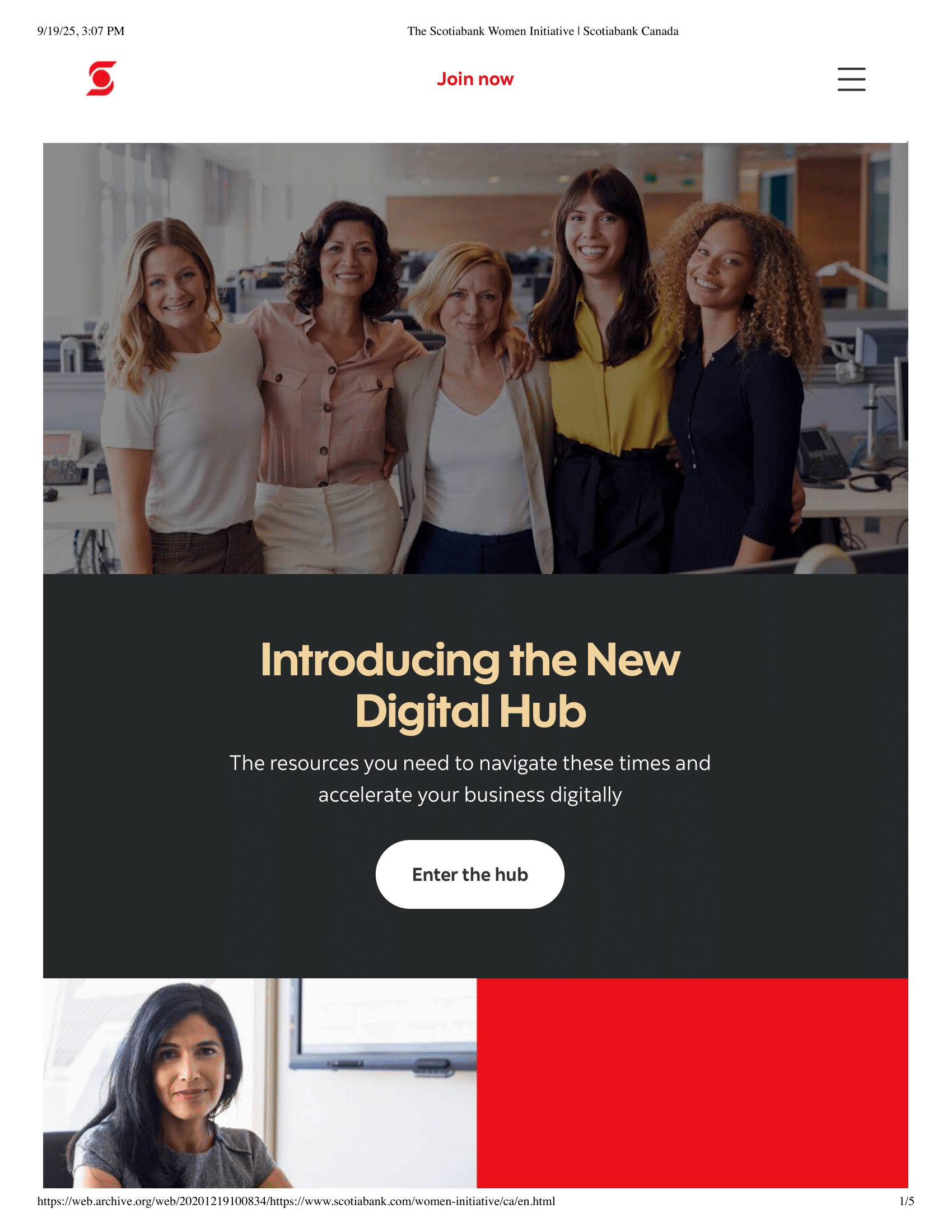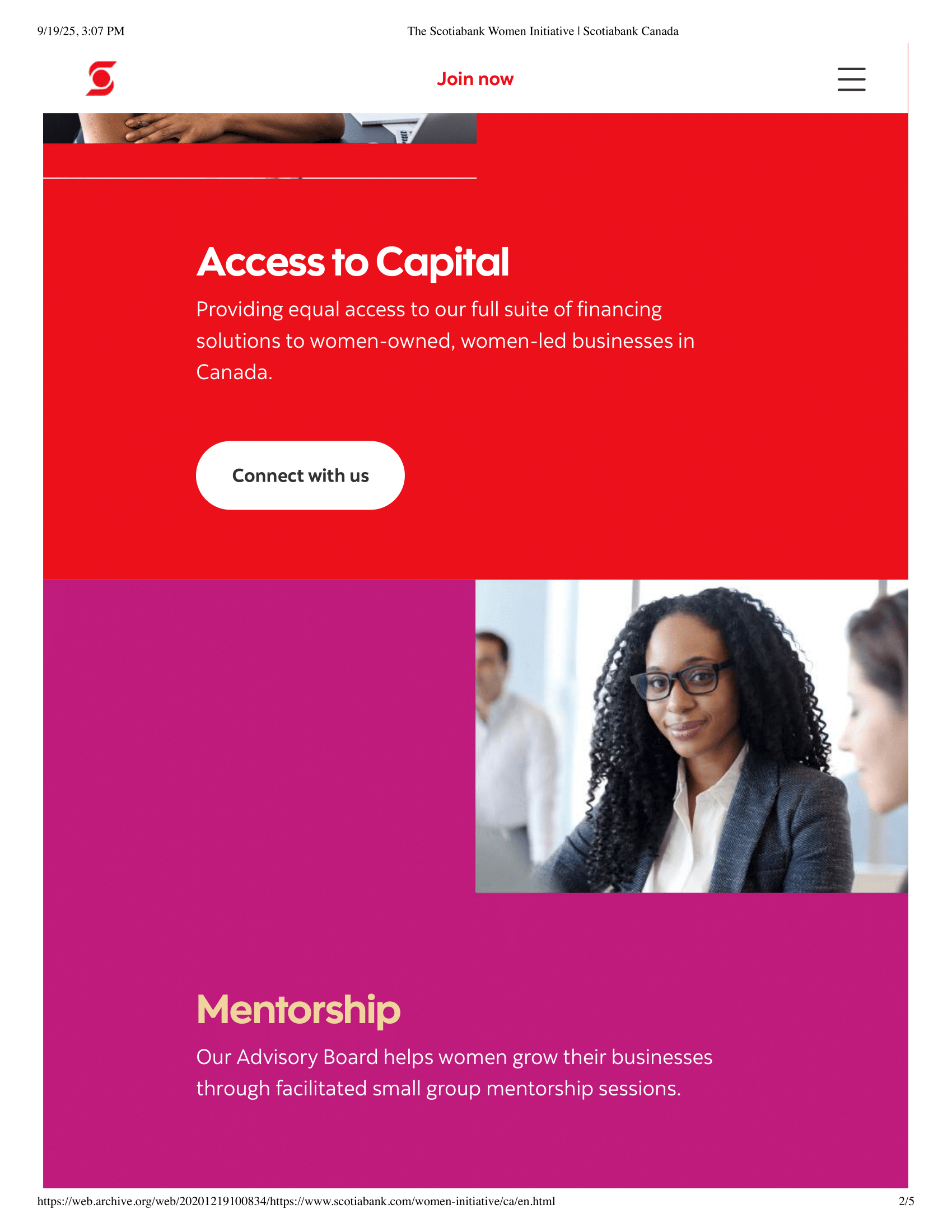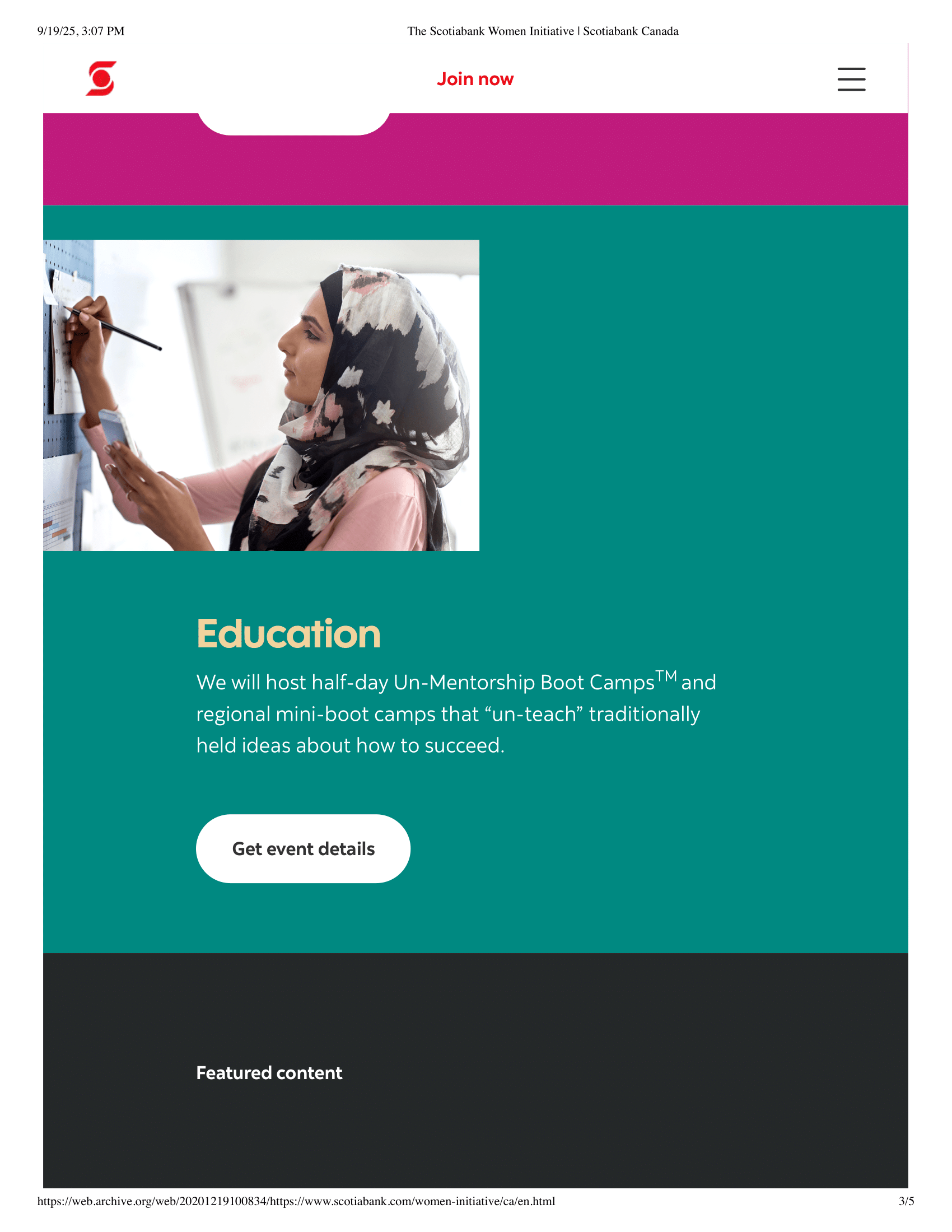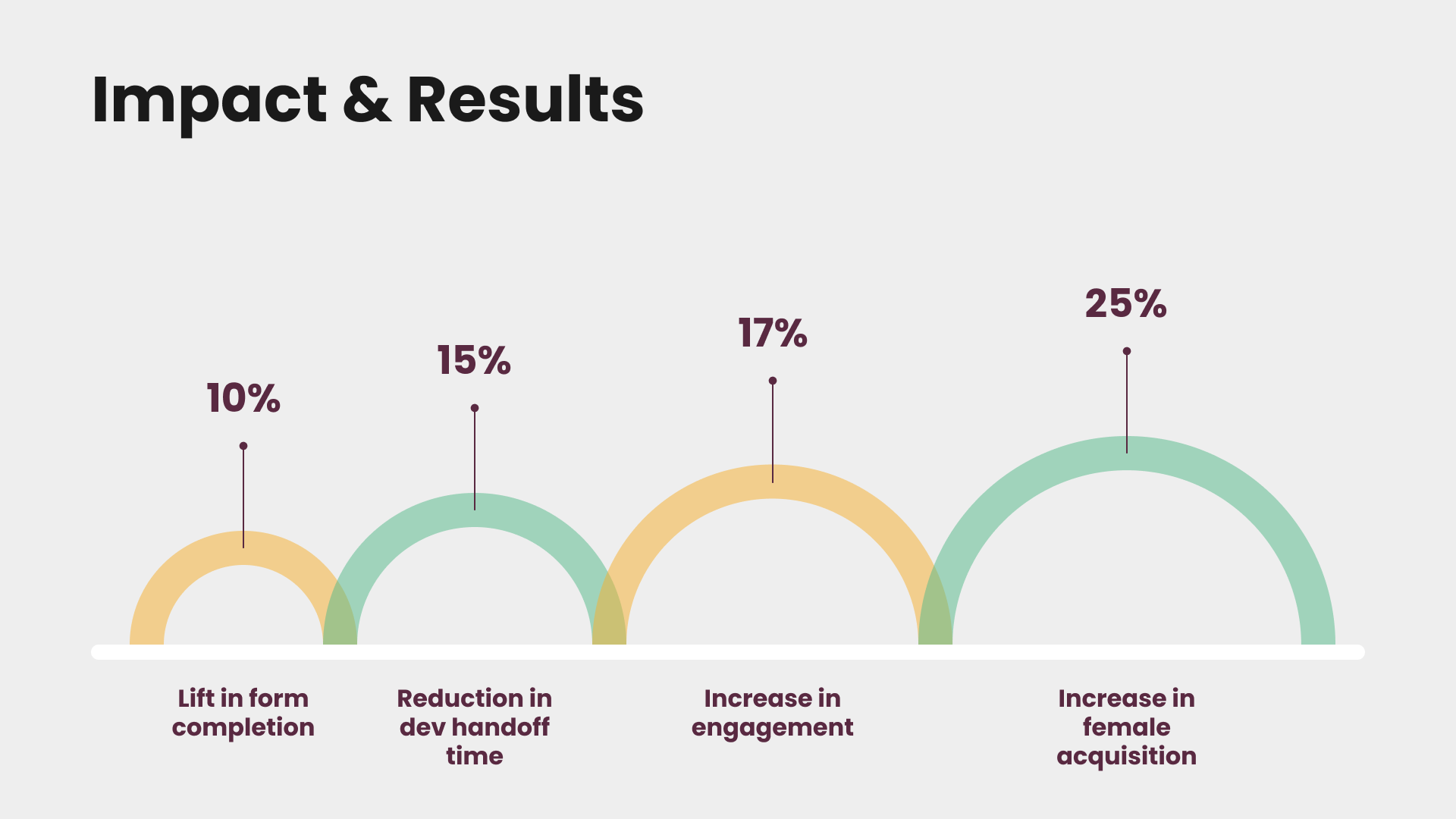

I was tasked with a mission that was as much about diplomacy as it was about design: to unite a flagship $10B program fractured across organizational silos into a single, coherent digital experience that lived up to its promise of empowering women.
My primary tools weren't just Figma and analytics, they were synthesis, storytelling, and a relentless focus on the user need that unified us all.




The Scotiabank Women Initiative promised a unified front for women's economic empowerment. Its reality was a disjointed digital ecosystem.
A user in Commercial Banking found a dead end when seeking wealth advice.
Global Markets had no pathway to community events. The experience betrayed the program's core promise.

I became a translator between business units and the users they aimed to serve.

This was the heart of the project. Presenting IA options wasn't about getting a preference, it was about building shared ownership.


The live site: www.scotiabank.com/women-initiative/ca/en.html is the validation of our strategic approach as a team.
It is the tangible embodiment of the new, unified architecture.
The design system ensured this consistency, cutting future development handoff time by 15% and providing a scalable framework for the entire initiative.
This project laid the essential groundwork for significant, measurable growth, proving the ROI of a design-led strategy.

This project redefined my role. A Senior Designer isn't the best pixel pusher, they are a strategic unifier and a facilitator of consensus.
Seeing the live site years later, serving as a central resource for women across Canada, is the ultimate validation. It underscores that our most critical task was not designing a single page, but building a resilient, scalable system that could endure and grow. This is the essence of strategic design.